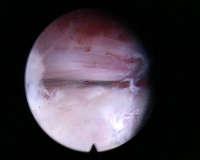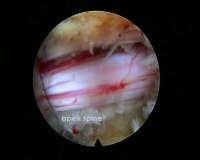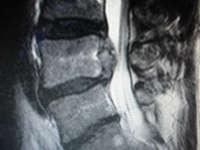Intervertebral disc surgery - procedure, procedure, aftercare
Many people are affected by problems with the intervertebral disc and unfortunately the severe pain and neurological symptoms can often not be controlled with conventional measures. In these cases, an endoscopic disc operation may be necessary, in which displaced disc tissue or disc tissue that has already protruded is gently removed under precise visual control. The following article provides more information.
Endoscopic disc surgery
With this surgical method, the pressuring intervertebral disc tissue is removed in order to relieve or expose the pinched nerve. The endoscope is inserted into what is known as the spinal canal through an incision in the skin that is only around 5 millimeters in size, while muscle tissue has to be cut up in the large, open operation in order to access the herniated disc. With this gentle procedure, no large incision is necessary. Larger tissue destruction and thus scarring are usually avoided. The procedure is much less stressful and the healing process is much shorter.
Gentle and safe process
Thanks to endoscopic disc surgery, a herniated disc can be repaired even more gently and safely. The nerve structures in the spinal canal are completely bypassed, which avoids injuries, adhesions, inflammation or other complications. The ligaments that lie between the vertebrae to stabilize the spine also remain intact.
General anesthesia is not necessary due to the lateral access as well as the tissue-sparing and painless treatment.
Procedure of endoscopic disc surgery
Under local anesthesia, an endoscope, which is equipped with various small working channels, is carefully advanced to the herniated disc. The surgeon can now remove the tissue from the affected disc that is pressing on the nerve that is causing the pain. This can be done very precisely because he can follow his every move on a screen. In some cases, the core of the intervertebral disc is reduced with the help of a special enzyme so that the outer fiber ring is relieved. The calcified cover plate of the vertebral bodies is refreshed to allow better perfusion of the disc and a stable protective fibrous ring to form. The condition of the intervertebral disc as well as the stability and mobility of the movement segment are completely preserved. Endoscopic disc surgery takes about 30 to 45 minutes.
If the patient is in good general condition, an outpatient procedure is possible.
What aftercare is required?
A day later, a check-up by a doctor takes place. The patient also receives an individual rehabilitation program from the doctors at the apex spine center after the operation.
After the procedure, the patient wears a special customized corset or bodice.
This serves the purpose of relieving the back and being able to pursue usual activities. About two weeks after the procedure, light physical activities are possible again. Three weeks after endoscopic disc surgery, it is possible to cycle or swim again, for example. After about six weeks, muscle-strengthening exercises are started and this also forms the transition to usual physical activities.
This means that physical training can also be resumed. Heavy physical activity should be gradually increased from the sixth week.
The success rate after endoscopic disc surgery
Of course, success is primarily dependent on the experience of the surgeon. The success rate in the apex spine center is around 96 percent. In any case, this procedure with few complications and very well tolerated is a gentle alternative to open surgery, because the effects and risks are kept as low as possible.




